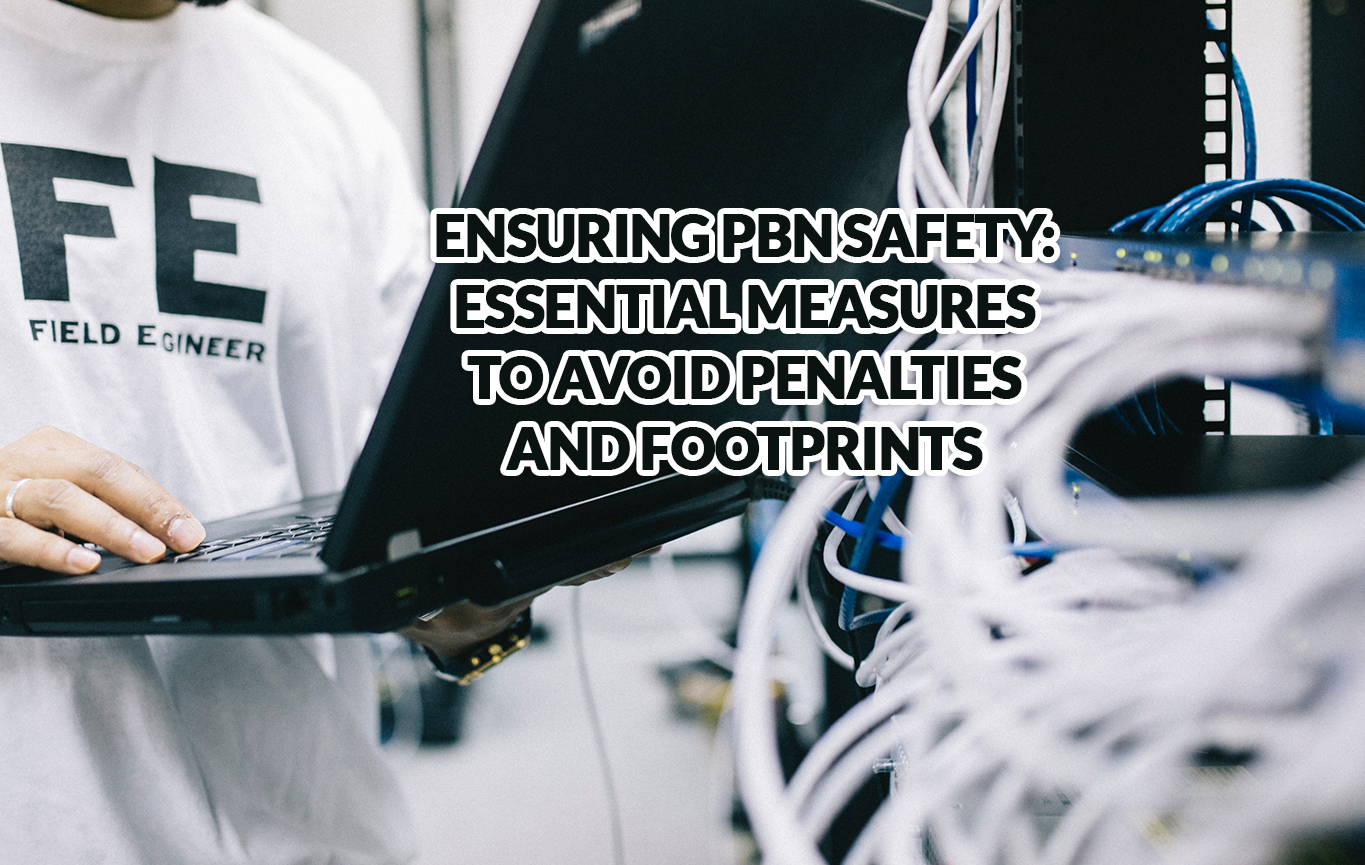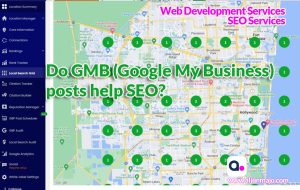Ensuring PBN Safety: Essential Measures to Avoid Penalties and Footprints

Building and maintaining a private blog network (PBN) can be a highly effective strategy for SEO and generating organic traffic, but it isn’t without its risks. The potential for penalties and footprints can lead to costly setbacks or, even worse, the complete devaluation of your PBN. Therefore, it’s crucial to implement a variety of safety measures to ensure the long-term success of your network.
In this article, we’ll be discussing the importance of domain diversity, unique content strategies, and maintaining a natural link profile. Additionally, we’ll cover the benefits of using different hosting providers and the necessity of regularly monitoring and updating your PBN. By following these guidelines, you’ll be well on your way to a secure and thriving PBN that effectively boosts your search engine rankings while minimizing risks.
Ensuring Domain Diversity
Make sure to mix up your domain choices, as having a diverse range of domains helps keep things looking natural and prevents any red flags from popping up. Domain diversity is crucial in maintaining a safe and effective private blog network (PBN). By using a variety of domain registrars and extensions, you can avoid creating a pattern that would lead to penalties or footprints. Additionally, it is wise to choose domains with different registration dates and expiration dates, as this will make it more difficult for search engines to detect and penalize your PBN.
In order to maintain domain diversity, consider acquiring expired or expiring domains from different sources. These domains often have a history of quality content and established backlinks, which can add value to your PBN without raising suspicions. Furthermore, avoid registering all of your domains under the same account or using the same WHOIS information, as this can lead to an easily detectable footprint. By implementing these strategies, you can ensure that your PBN remains safe from penalties and footprints while still providing the desired benefits to your main website.
Implementing Unique Content Strategies
It’s crucial to master the art of crafting unique content strategies for maintaining a strong online presence without risking any penalties or leaving unwanted footprints. Unique content is the backbone of any successful PBN; it keeps your network from being flagged as spam and ensures that your backlinks remain valuable. To achieve this, you must avoid duplicate content, use multiple content formats, and maintain a consistent posting schedule. You should also consider outsourcing content creation to reputable writers or agencies, as they can provide a fresh perspective and help diversify your content.
Another essential aspect of unique content strategies is the implementation of varied internal and external linking patterns. This prevents search engines from detecting patterns and establishing connections between your PBN sites. Make sure to vary anchor text, link placement, and follow/nofollow ratios for both internal and external links. Additionally, ensure that your PBN sites link to high-quality, authoritative websites apart from your money site. This will create a more natural linking environment and reduce the risk of penalties. By implementing these unique content strategies, you can maintain a strong online presence and avoid any potential pitfalls associated with PBNs.
Maintaining a Natural Link Profile
To keep your network thriving, you’ll want to focus on maintaining a natural link profile that won’t raise any red flags with search engines. This means ensuring that your PBN doesn’t have an unusually high number of backlinks from low-quality or spammy websites, as this may lead to penalties from search engines like Google. Instead, aim for a diverse range of backlinks from high-quality, relevant websites that will benefit your PBN’s overall link profile. Additionally, avoid using the same anchor text for all of your backlinks, as this can be a clear indication of an unnatural link profile. Vary your anchor text and incorporate both branded and non-branded keywords to maintain a more natural appearance.
Another essential aspect of maintaining a natural link profile is to ensure that your PBN doesn’t grow too quickly. Rapid growth in backlinks can be a red flag for search engines, as it may indicate that you’re attempting to manipulate your site’s rankings. To avoid this, focus on gradually building your PBN’s link profile over time, rather than acquiring a large number of backlinks in a short period. This gradual, organic growth will not only help you avoid penalties but also create a more sustainable foundation for your PBN’s long-term success.
Utilizing Different Hosting Providers
When building your network, you’ll want to consider utilizing different hosting providers to maintain a natural appearance and prevent any potential issues with search engines. Using a single hosting provider for all your Private Blog Network (PBN) sites can leave a noticeable footprint, making it easier for search engines to identify and penalize your PBN. By diversifying your hosting providers, you can effectively reduce the risk of leaving a pattern that could lead to penalties and deindexing of your PBN sites.
To avoid footprints and penalties, it’s important to choose hosting providers that offer different IP addresses, server locations, and unique nameservers for each of your PBN sites. This will help create a more natural and organic link profile, making it harder for search engines to detect any patterns or link schemes. Additionally, look for hosting providers that offer affordable plans and reliable uptime, as these factors can play a crucial role in the success of your PBN. Remember, the goal is to maintain a natural appearance and keep your PBN sites as separate entities, so investing in a diverse range of hosting providers is essential for the safety and success of your network.
Regularly Monitoring and Updating Your PBN
Ensuring the longevity and effectiveness of your network requires consistent monitoring and updating of your sites. This is crucial to avoid leaving any footprints or patterns that may lead to penalties from search engines. Regularly checking the performance of your PBN sites will help you identify any issues, such as broken links, outdated plugins, or content that needs to be refreshed. Additionally, updating your PBN sites with new and unique content will not only help maintain the relevance of the site but also contribute to its organic growth.
To keep your PBN safe from penalties, it is essential to stay up-to-date with the latest search engine algorithm updates and industry best practices. By doing so, you can make necessary adjustments to your PBN to ensure that it remains compliant with search engine guidelines. Moreover, always be vigilant about the security of your websites by implementing proper security measures and monitoring for any signs of hacking or spam. In conclusion, the key to a successful and safe PBN lies in regularly monitoring and updating your sites, staying informed about industry trends, and maintaining a proactive approach to security.
Frequently Asked Questions
What is the impact of using expired domains for my PBN, and how can I mitigate any potential risks associated with this?
Using expired domains for your private blog network (PBN) can have both positive and negative impacts on your search engine optimization (SEO) efforts. On the one hand, expired domains often come with existing backlinks, domain authority, and traffic, which can help boost your PBN’s performance. On the other hand, search engines like Google may penalize your PBN if they detect manipulative tactics, such as using expired domains solely for link-building purposes, leading to lower rankings or even de-indexing. To mitigate potential risks, conduct thorough research on the expired domain’s history, ensure it has a clean backlink profile, and maintain a natural link-building strategy with relevant, high-quality content.
How can I effectively manage the workload associated with maintaining a PBN, particularly when it comes to content creation, link building, and monitoring?
Effectively managing the workload associated with maintaining a private blog network (PBN) requires a strategic approach to content creation, link building, and monitoring. To streamline content creation, consider outsourcing to freelance writers or using content generation tools, while ensuring the content is unique, relevant, and of high quality. For link building, focus on acquiring links from diverse and authoritative sources, and avoid over-optimization. Regularly monitor your PBN’s performance using analytics tools to identify potential issues and make necessary adjustments. By staying organized and proactive, you can maintain a successful PBN while minimizing the risks associated with penalties and footprints.
Are there any specific tools or resources that can help me more efficiently manage and maintain my PBN to ensure its safety and effectiveness?
Managing a private blog network (PBN) can be a challenging task, especially when it comes to ensuring its safety and effectiveness. To streamline this process and maintain your PBN efficiently, there are several tools and resources available. These tools can assist with content creation, link building, and monitoring, as well as help you avoid penalties and footprints. Some popular resources include automated content creation tools like Article Forge, link management software like Link Assistant, and monitoring tools such as Majestic and Ahrefs. By employing these tools, you can better manage your PBN and improve its overall performance.
How often should I be adding new sites to my PBN, and what is the best way to determine when it’s time to do so?
It is crucial to continually expand your PBN by adding new sites regularly to maintain its effectiveness and stay ahead of search engine algorithms. However, there is no fixed rule on how often you should add new sites, as it mainly depends on your niche, competition, and goals. A good practice is to monitor the performance of your existing PBN sites and analyze your competitors’ link-building strategies. If you notice a decline in rankings or stagnation in growth, it might be an indication that it’s time to add new sites to your PBN. Keep in mind that diversifying your network and updating it with fresh content will help you avoid potential penalties and footprints.
What are some common mistakes or pitfalls to avoid when building and maintaining a PBN, particularly when it comes to ensuring the network’s safety and avoiding penalties?
When building and maintaining a PBN (Private Blog Network), some common mistakes to avoid include using low-quality or duplicate content, registering all domains under the same registrant, hosting all sites on the same IP, using the same site design or templates, and excessive interlinking between the PBN sites. These mistakes can result in a footprint that can be easily detected by search engines, leading to penalties and deindexing of your PBN sites. To ensure the safety of your network, focus on creating unique, high-quality content, diversifying your hosting providers and IP addresses, and limiting the number of links between your PBN sites.
Conclusion
In conclusion, it’s crucial to play it safe when it comes to PBNs. Keep your domains diverse, use unique content, and maintain a natural link profile. Don’t forget to spread your sites across different hosting providers to avoid footprints.
Remember, always be on the lookout for any red flags and update your PBN regularly. You don’t wanna risk any penalties that could harm your site’s rankings. Stay vigilant and you’ll be good to go!


